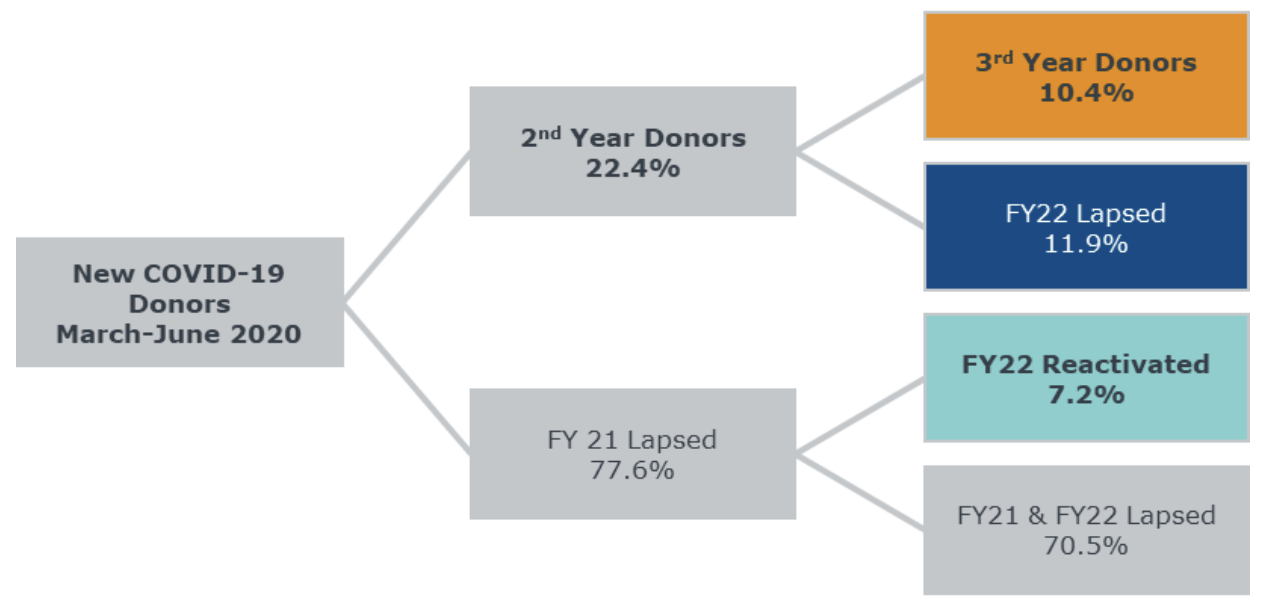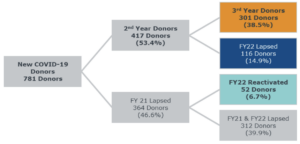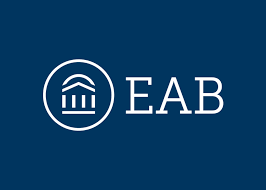
Opinions expressed in AGB blogs are those of the authors and not necessarily those of the institutions that employ them or of AGB.
As the world continues to move on from the COVID-19 pandemic, it feels in many ways that higher education institutions are moving back to “business as usual,” especially regarding work in advancement. The phrases “unprecedented times” and “emergency action” have fallen out of style as our constituents find themselves returning to regular routines and focusing on other things, even as the pandemic continues. This presents a challenge to many institutions that had success in engaging donors for the first time during those pivotal early months of 2020 and may be looking to retain those donors. For many institutions, the donors who gave at a moment of great uncertainty and hardship were instrumental in making the necessary adaptions to adjust to the needs of 2020 and 2021. Engaging with these donors as the emergency passes may prove to be a unique and rewarding challenge for advancement teams.
Looking at the narrow slice of new COVID-19 donors across EAB’s Advancement Marketing Services (AMS) partners, several trends start to emerge. A “new COVID-19 donor” is defined as an individual whose first gift to an institution came between March and June of 2020. These donors gave in the initial months of a once-in-a-lifetime crisis and did so at a moment when so many organizations and individuals were in peril. Unsurprisingly, many of these donors gave to various emergency appeals, hardship funds, and relief campaigns that targeted the more vulnerable populations on campus or in the surrounding community. This cohort was predominantly composed of alumni, but the individuals’ families and university friends also constituted large subsets of the donor pool as well. The generosity of spirit from these individuals cannot be denied, and the institutions that held these funds saw new donors step up in an incredible way.
In the wake of these pandemic relief efforts, the focus on these individuals has shifted toward retention. Anecdotally, there was wide concern across our partners that COVID-19 donors do not retain as well as a donor who had given in normal circumstances, but a cross-partner analysis has shown that those fears may not have been founded. Across many of our partners, the average retention rate in fiscal year 2021 was about 22 percent, well within our goal benchmark range for first-time donors for our partners. In fiscal year 2022, roughly 10 percent of the COVID-19 donors gave for a third consecutive year, and another 7 percent reactivated after missing 2021. Reactivation is a trickier benchmark to compare but seeing roughly one in eleven donors who lapsed in 2021 is promising. These donors appear to be willing to engage with their schools. Finding ways to tap into that willingness to give could prove fruitful.
Cross-Partner COVID-19 Donor Retention
First-Time Donors Who Gave between March and June 2020

Some AMS partners have excelled with these efforts. The numbers above represent the averages across our partner data set, but some have found exceptional success with retention. In particular, one partner, a private midwestern university, saw 53 percent retention in 2021, more than doubling our expected benchmarks, and then had 38 percent giving for a third consecutive year and another 7 percent that reactivated in 2022. These donors are willing to keep giving, but the institutions need to pay attention to reengaging with them.
Private Midwestern University
First-Time Donors Who Gave between March and June 2020

Another AMS partner, a public southeastern university, saw 18 percent retention of young alumni (graduates of the last decade) COVID-19 donors in 2021, well above typical retention for this generational cohort, and then had almost 11 percent giving for a third consecutive year and another 3 percent that reactivated in 2022. Clearly, strong mission orientation and immediate impact appealed to young alumni donors in a way that general appeals had not. But new and emerging crises and diverse interests will continue to distract younger donors and likely lead them away from supporting their alma mater once the sense of urgency has passed.
Public Southeastern University
First-Time Young Alumni Donors Who Gave between March and June 2020

Partners like the two above were successful in retaining their COVID-19 cohort by continuing to utilize mission-based language within their solicitations, making sure to recognize affinity for high-impact, time-urgent, and need-based designations. They were careful to align donor interest with either continued examples of emergency student support or projects that served the local community beyond campus. Another key aspect of continued success with COVID-19 donors was meaningful stewardship that provided illustrations of donor impact collectively, whether through statistics, stories, or both.
Many higher education institutions valued new donors who gave during the COVID-19 crisis, not just for additional revenue but also for efforts to identify donors who had largely ignored prior engagement and outreach. Evidence shows that these donors are willing to continue to engage with institutions, but they need to be actively and thoughtfully courted to inspire the same generosity that manifested at the onset of the pandemic. Advancement teams should continue to seek ways to invite these lapsed donors back into the fold.
Adam Matthews is a strategic analyst, Advancement Marketing Services, at EAB, an AGB mission sponsor.
With Thanks to AGB Mission Sponsor: EAB


